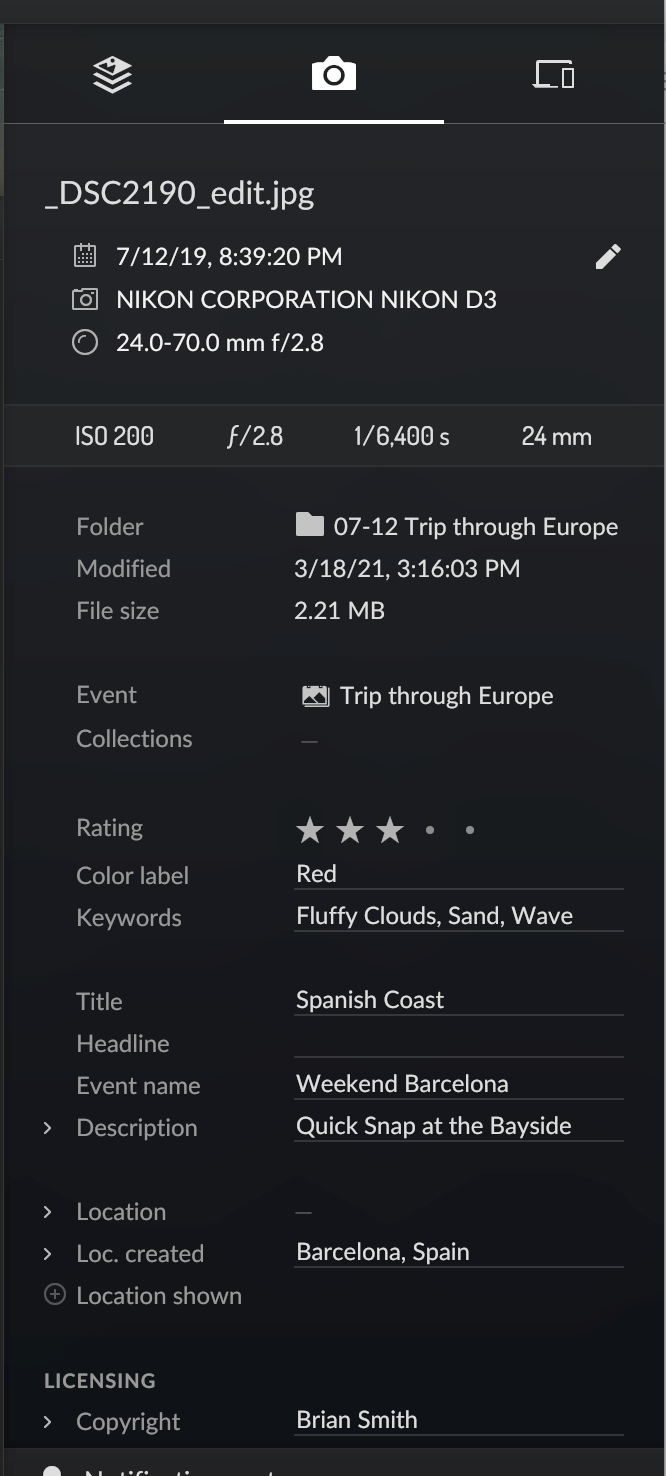Export Collections, Advanced Metadata and Apple M1 · Aspect Preview 20
 Export collections are collections that have a set of rules attached to them, which automatically get executed whenever you add or remove an image to or from the collection. Those rules are the same as the ones provided by the export dialog: file location, format and naming. As well as image size and metadata handling.
Export collections are collections that have a set of rules attached to them, which automatically get executed whenever you add or remove an image to or from the collection. Those rules are the same as the ones provided by the export dialog: file location, format and naming. As well as image size and metadata handling.
If we look at existing export workflows, they are simply one-shot actions. With your images selected, you open up an export dialog, make all your settings and hit export – to then wait for it to finish. It is a static workflow, that happens at the end of your organization and edit process. If you missed an image, or need to do some more editing touches, you need to repeat the process; and when you work on a project like a book or calendar, where you may have to play around with a lot of different images, starting over and over again can become quite cumbersome.
Export collections solve all these issues, because photos get exported immediately, as you add them to the collection. They get deleted when you remove them from the collection, they get re-exported when you change the export rules or edit an image, and you can see all exported images at a glance. We think it is great improvement to the daily process of a photographers digital life. Here are some examples how we use export collections:
We use an export collection called
Instagram. Every image that is put into this collection will be exported to an “instagram” sub folder within its event folder, with a maximum size of 1080 pixels. Like this, selecting and exporting images is a single step and we can always see in retrospective which images we have shared on Instagram.Another export collection called
thePickscontains JPEG versions of the best images of an event. This way we can easily browse through our best photos within the file system and have them readily available for sending them out or uploading them to the web.Several export collections, such as
send to Anna, are used to collect photos to send to a particular person. Like in the Instagram case, this allows us to always have a set of exported files ready to send out, as well as allowing to keep track of which images have been sent out.Then we also have export collections in use for book/calendar projects. Gradually selecting and editing images, while immediately having the exported versions available to use in the book/calendar editor results in a much more lively workflow than repeating manual exports over and over again.
We think export collections can be a handy tool in the photographers organizing toolbox and hope you will get as much out of it as we do.
When we build the first version of our Metadata page we knew that this is just a small subset of what is required in photographers workflows today. Exchanging photos in a digital world is daily business and making sure that photos have the right set of metadata is important whether this is required by the customer or simply to add your own ownership details in there. With preview 20 we have added most IPTC Core and Extended fields, resulting in a comprehensive toolset for image distribution.
Last, but not least, after doing a bunch of performance analysis and optimization, we are happy to announce that Aspect is now running much faster on Apples new M1 processors, as well as on Macs with Intel GPUs.
As always, you can find the full list of changes in our community forum: Version 1.0.0-preview.20

Comments for the post are currently disabled.
0 comments